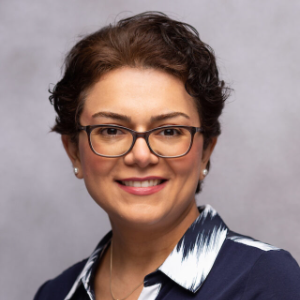Title : Effect of Mesenchymal Stem Cell-derived Extracellular Vesicles (EVs) on Cornea Nerve Regeneration
Abstract:
Purpose: Corneal nerves and innervation are susceptible to several diseases including diabetes. Despite the clinical need to promote corneal nerve regeneration, few specific therapeutic interventions are available. MSCs and their paracrine effect mediated by EVs presents an attractive treatment for enhancing nerve regeneration. In this study, we assessed the neuro regenerative potential of EVs from BM-MSCs cultured in 2D and 3D systems.
Method: Human BM-MSCs were cultured in 2D monolayer and 3D bioreactor systems. EVs were isolated using ultracentrifugation followed by size and concentration measurements utilizing NanoSight and Exoview. Mouse trigeminal ganglia (TG) neurons were isolated from Thy1-YFP mice possessing fluorescent corneal nerves. The neurons were plated in the presence and absence of EVs derived from 2D or 3D culture systems. Neuronal growth and morphology were monitored over 5 days. Thereafter, the neurons were fixed and immune-stained with β3 tubulin followed by confocal microscopy. Images were analyzed by Neurolucida software to obtain the density and length of the neurites.
Results: The Nanosight tracking analysis revealed significant increase in concentration of EVs obtained from 3D vs. 2D culture condition (24X fold-change). Exoview analysis showed significantly higher concentration of CD63, CD81 and CD91 exosomal markers in 3D vs. 2D condition. Furthermore, a notable shift towards a more heterogeneous EVs phenotype was observed in the 3D compared to 2D culture systems. EVs derived from both 2D and 3D condition significantly induced neurite growth after 5 days in culture compared to untreated control. Neurolucida analysis of the Immunostaining images (β3 tubulin) showed a significant increase in density and complexity of the neuronal growth of TG neurons in 3D vs. 2D condition. Additionally, a significant increase in neuron branching was observed in 3D versus 2D.
Conclusion: Our results demonstrate the distinct effect of BM-MSCs-derived EVs in neurites growth and elongation. EVs obtained from 3D culture system enhanced the neurite complexity and branching compared to the effect of vesicles from 2D culture. This specific property could potentially enhance the therapeutic effect of EVs in vivo and provide new therapeutic interventions for the restoration of damaged corneal nerves.




